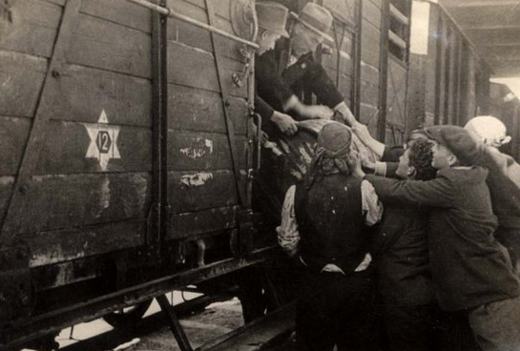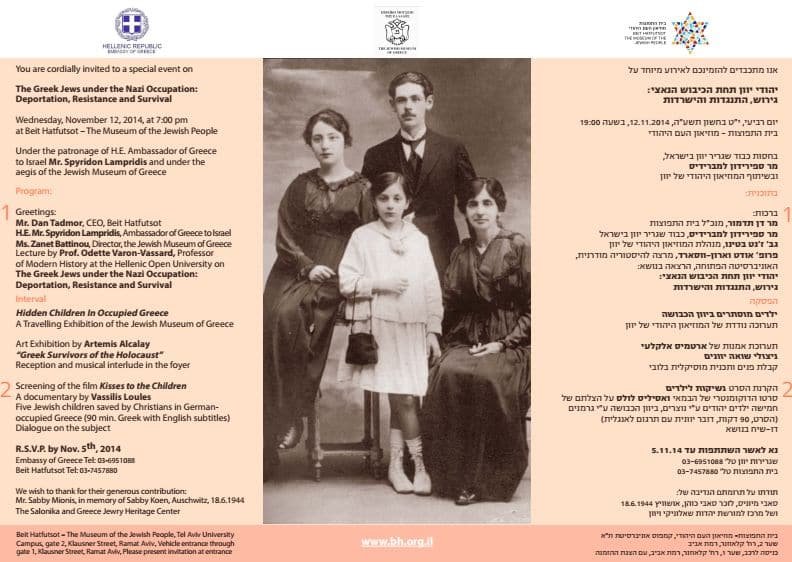Artemis Alcalay actualizes a visual recording of the Greek Jews who survived the horrors of the Concentration camps, a unique artistic transcription in Greek documentation.
Within the last two years the artist Artemis Alcalay has undertaken a photographic project which is not only extremely arduous but also of great importance. Travelling all over Greece (and presently abroad) the Athenian creator comes into contact with and photographs the last remaining Greek Jewish survivors of the Holocaust, making a ‘silent’ study on the trauma which remains permanently engraved in the memory, after seventy whole years.
This ‘narrative without words’ though it revolves around a visual viewing of the subject, remains today perhaps the only record of the few remaining Greeks who managed to survive the horrors of the Nazi concentration camps. An astonishing as well as moving undertaking.
More about the artist.
Who is who: Artemis Alcalay was born in Athens in 1957. She studied painting at the Athens School of Fine Arts under Iannis Moralis and Dimitris Mytaras and scenography with Vassilis Vassiliades. She continued her studies at New York University and has trained in weaving and photography. Her work is exhibited both in Greece and internationally. Most of her pieces are in mixed media, combining painting, sculpture, weaving, photography and digital art.
-You photograph Holocaust survivors. How did the idea for this project arise?
The work is still in progress, so the first title that comes to mind is ‘narrative without words’. Photographing the Greek Jews who survived the Nazi concentration camps is a subject that has concerned me since I was young. Many members of my family perished in the camps. Seventy years have passed since the liberation from Auschwitz, and now that many of my relatives have passed away, I decided to begin this project.
-When did you begin this undertaking?
The exhibition ‘Home an Installation’ at Gallery 7 in 2010 and ‘Home a wandering’ at Beton 7 in 2012, were the foundations on which this series of photographs is based. In the company of my small pieces, ‘the houses’, I travelled all over Athens, I met and talked to a large number of people and groups with particular characteristics. One of these groups were the Greek Holocaust survivors who I have devoted the last two years to photographing. I am overwhelmed by their horrific experiences on the one hand and the inner strength and the wisdom they have acquired, on the other. I am under the impression that there are large gaps in the records of Greek Jews who survived the Holocaust. For years they themselves have chosen this silence, out of fear.
-Were you aware of these feelings when you met them?
The traumatic memories were unspoken for decades. The testimonies began only recently. In this particular work memory translates into a ‘work of art’ where words are obsolete and the image carries all the messages. These photographs have an interactive character blending the scene of the memories with the immediate present and future.
-How many portraits have you completed so far and where have you travelled for the needs of the project?
Up to this moment I have photographed 21 people, 17 women and 4 men. There are two people in Corfu and a few in Thessaloniki with whom I am in contact and who I hope to include in my work. I am trying to include all the communities which flourished before the war. After I photographed those living in Athens, I went to Corfu, Yannena, Thessaloniki, Volos, and Larissa to meet victims who originated from communities which were completely annihilated like in Arta, Kastoria etc. Recently I travelled to Rhodes for the 70th anniversary of the deportation, where I met victims who live abroad; in Italy, Belgium and the USA. I would like to travel outside Greece since many migrated to other countries after the war, not only from Greece but from all over Europe, seeking a peaceful haven.
-How exactly do you locate these people and come into contact with them? Did you have difficulty finding them?
This contact is not particularly difficult. I am constantly in touch with many families and Jewish communities all over Greece and around the world, as well as Nursing Homes like Restio in Athens and Saoul Modiano in Thessaloniki. Every family has a relative, friend or acquaintance who survived and their help has been invaluable.
-What were the reactions so far of the 21 protagonists of the portraits? Were there people who did not want to be photographed or who were extremely negative about the project?
I was received with extreme kindness and courtesy by the survivors, their children, their grandchildren. There were very few cases of people who did not wish to be photographed. Three of them refused to be included. It is something I understand and totally accept. Time is relative, the soul is timeless…. Everyone experiences, comprehends and reacts differently. They try to keep the ghosts of the past at bay in any way possible, so they can continue living. Very often their families try to protect them from reliving the trauma.




Bendito Israel Shalom.